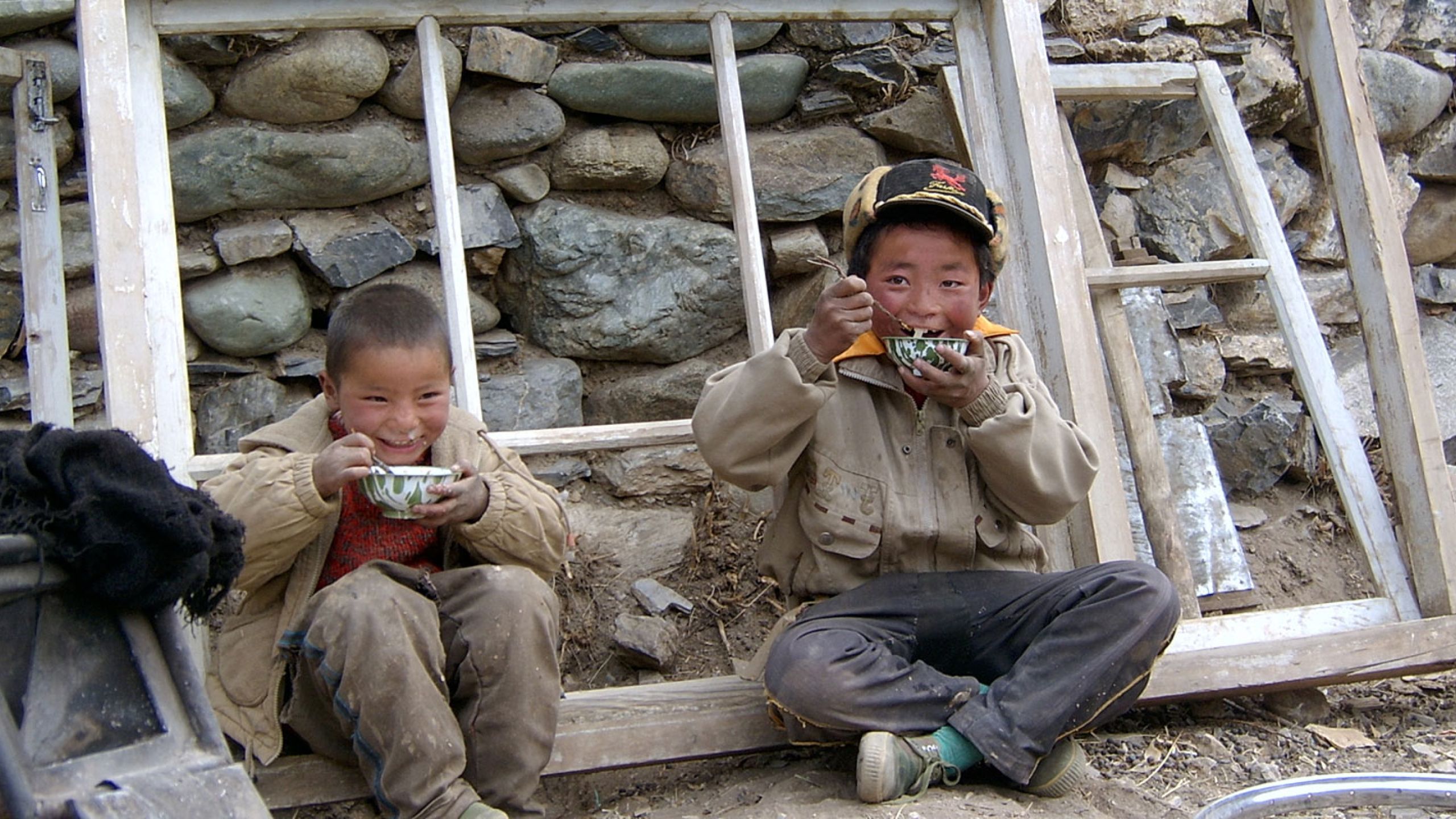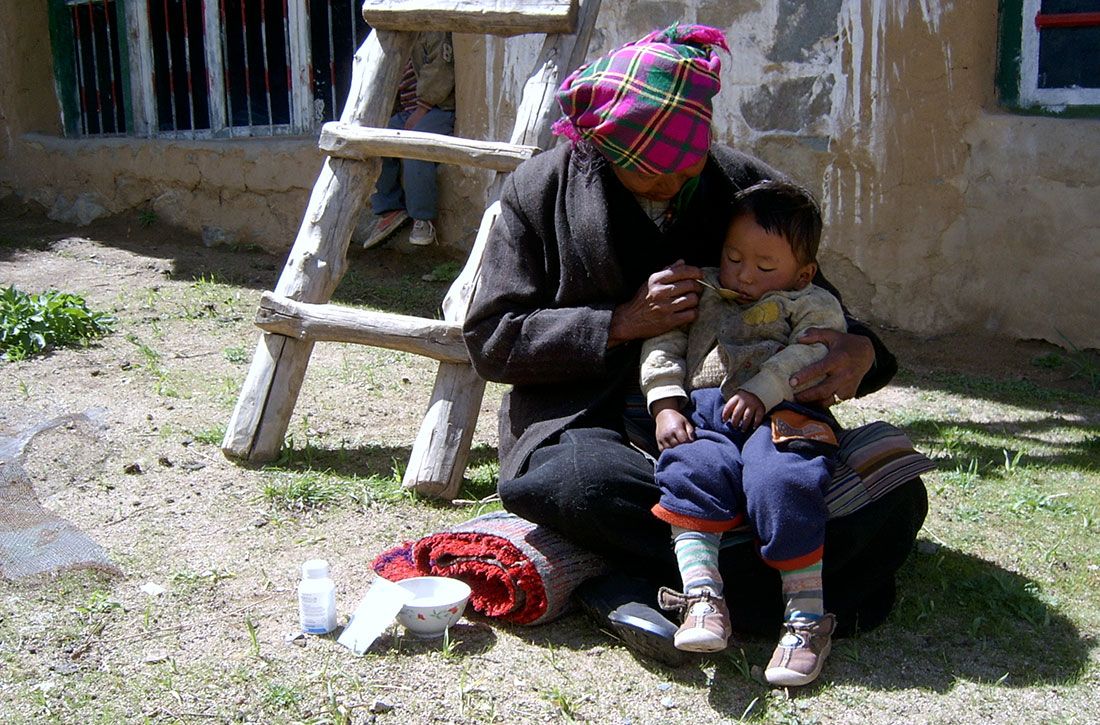
Child Feeding and Indigenous Food Development
The problem
Disruption of the traditional barter economy has created food insecurity and dangerous nutritional inadequacy for many cash-poor families on the Tibetan Plateau. Our research shows that children are at the highest nutritional risk between the ages of 6 months and 3 years. Therefore, we concentrate our efforts at improving the nutrition, particularly the protein and micronutrient intake of these children and their lactating mothers.
Interviews conducted by Terma have revealed that the availability of modern processed foods with no nutritional value, such as candy, cookies, packaged ramen noodles, sweet drinks and chewing gum, has decreased the consumption of wild plants and indigenous food sources. Elders stated that even if the variety of processed food becomes much greater, children were stronger and healthier in the past when they were eating locally cultivated food. According to the villagers, alternative indigenous food was previously a regular component of daily diets.
What Terma is doing
Terma is supporting the renewed supply and consumption of highly nutritious indigenous natural foods that grow abundantly on the Plateau, especially droma (potentilla anserina), a compact, wild-harvested root food highly esteemed in the traditional Tibetan diet. Terma’s nutritional analysis of the root shows that it is high in iron and vegetable protein, and when mixed with the traditional staple of barley, droma combines to form a complete protein. This enables a locally available solution to the malnutrition evident in Tibetan families.
Terma distributes droma to schoolchildren and mothers at nutritional risk in combination with multivitamin supplementation, a well-received, low-cost practice. Terma also continues to collect data on the optimal production of droma, along with other locally grown, nutritional food sources, and its potential as a source of revenue for local harvesters. In interviews conducted by Terma, farmers, traditional doctors, and herbalists discuss the properties of droma as a plant, food, and medicine. During this last decade, it became apparent that children who received multivitamins and droma had rapid improvement in clinical status and growth indices.
